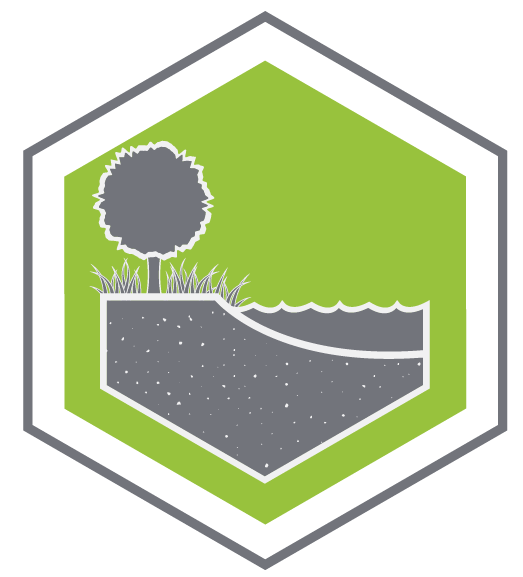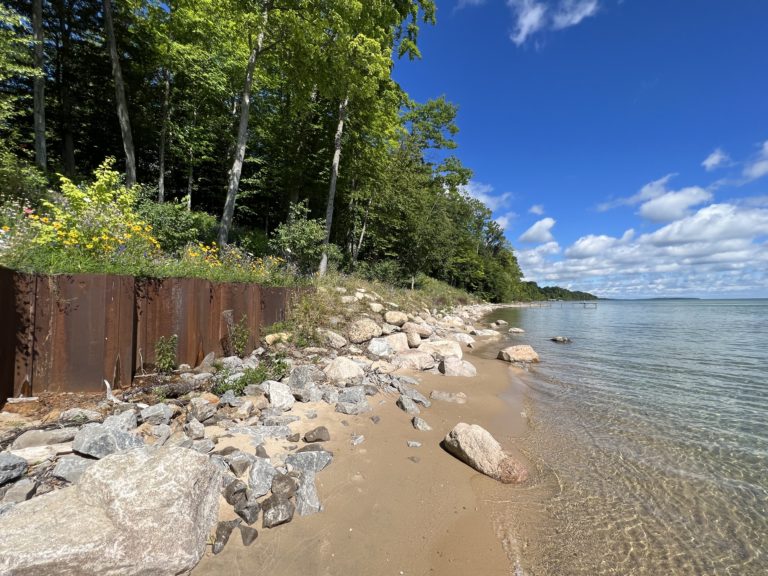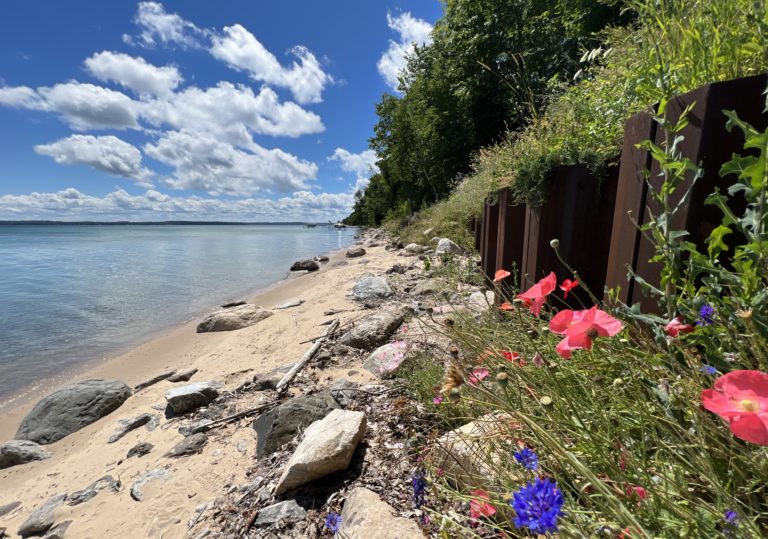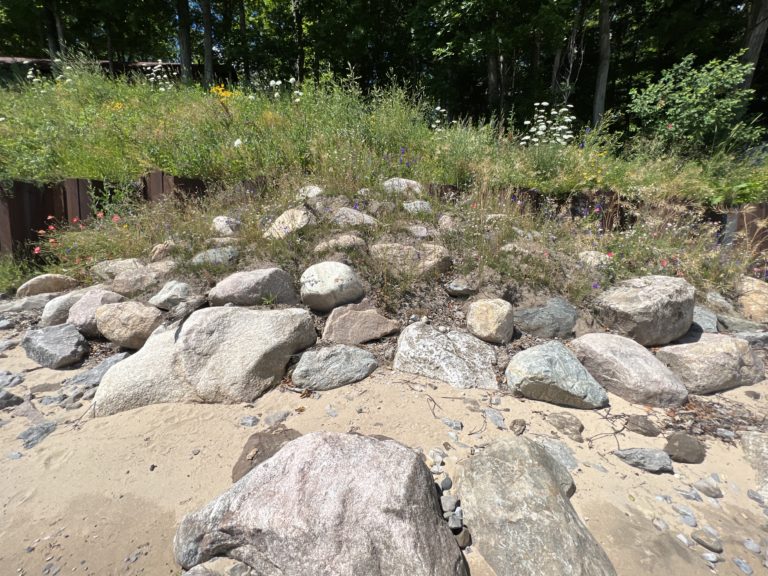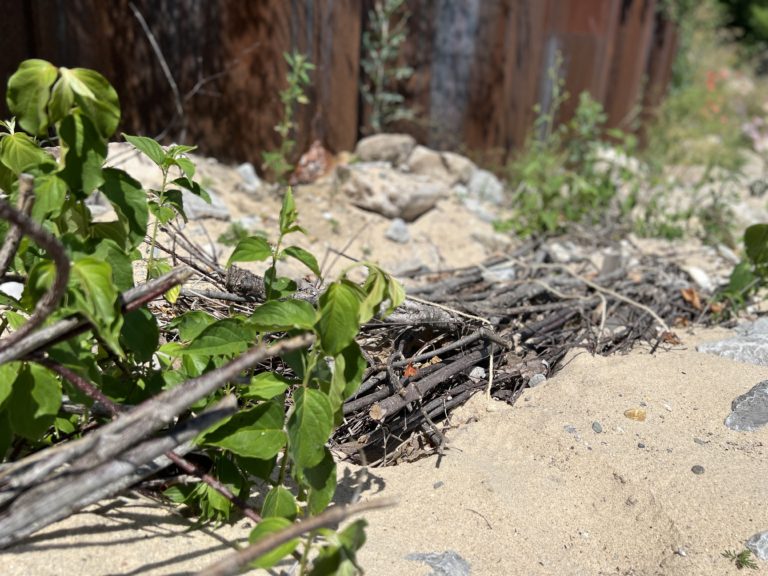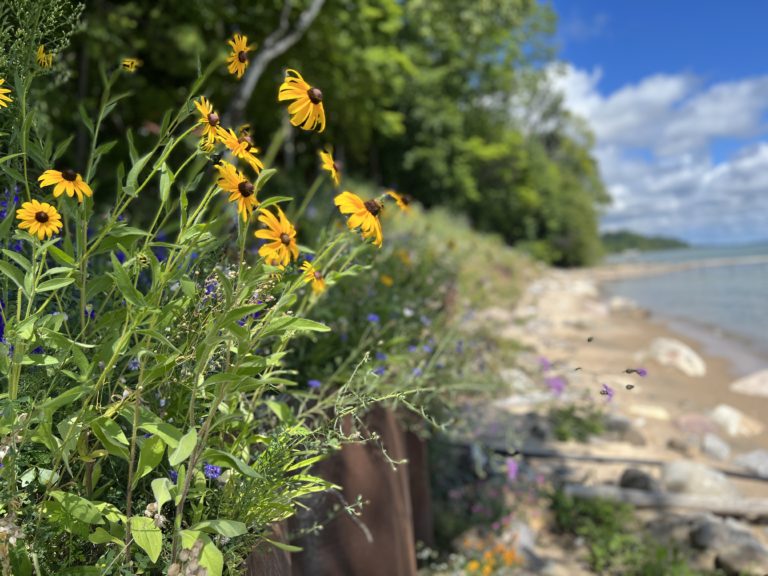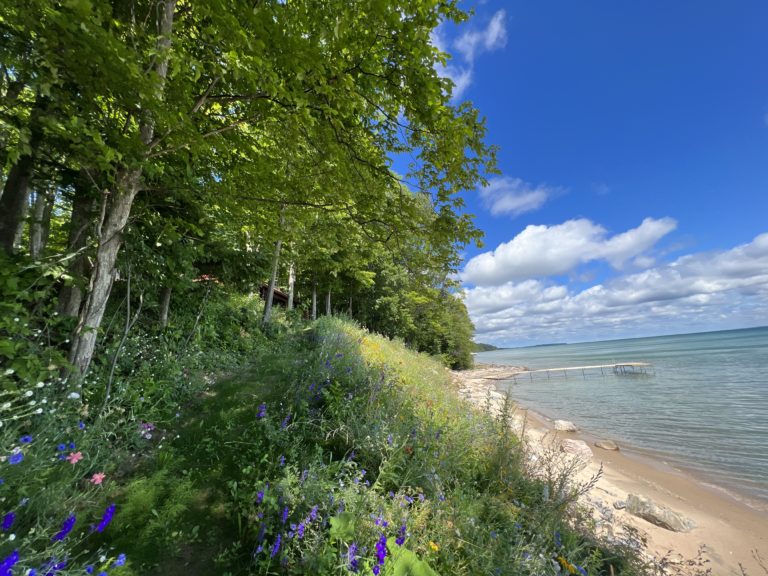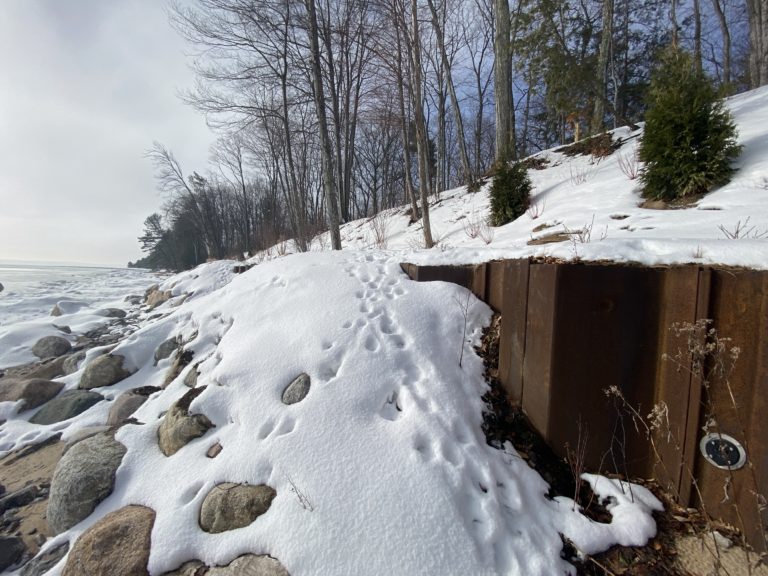Large rip rap was placed at four locations along this hardened break wall to soften the appearance and performance of this shoreline. Topsoil was placed over the boulders, to fill the voids, and then the surface was vegetated native seed and brush bundles, also known as fascines. These stone structures will decrease wave and ice push damage to the steel wall but more importantly they allow for wildlife movement – above and below the wall. In some locations, the bulkhead stands 5 to 6 feet higher than the grade of the beach.
There was immediate evidence of wildlife movement over these mounds, thus resulting in a successful example of how natural shoreline and bioengineering techniques can be used in high energy applications – even the Great Lakes!
“Our 100-year-old cabin sits atop a 25-foot bluff on West Grand Traverse Bay. In October 2019, a powerful storm eroded our shoreline, sending soil and trees into Lake Michigan.
Nate Griswold and his team at Inhabitect were the perfect choice for restoration. Their expertise, conservation focus, and use of native plants exceeded our expectations. Talented, hardworking, and passionate, they made the process seamless.
I highly recommend Inhabitect for shoreline restoration and landscape projects—their professionalism and dedication are unmatched.”
– Property Owner
